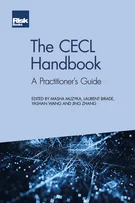Approaches to the Quantification of Country Risk
Paul Domjan
Preface: Two economists’ views on the bank-sovereign linkage
Introduction
Assessing Country Risk: A Practical Guide
Sovereign Risk: Characteristics, History and a Review of Recent Research
The Arab Spring: Insights for Political Risk Analysis
The Eurozone Crisis: The Forgotten Risks of Private and External Debt
How the Eurozone Crisis Became a Banking Crisis, and the Risk of Japanisation
The Changing Dynamics of Country Risk
Capital Flight as a Political Risk Indicator
Debt Crisis Indicators of Emerging Markets versus Eurozone Economies
How Much Economic Capital Could European Banks Save? The Case for Optimal Sovereign Risk Allocation
Fixing Fundamental Flaws in Probabilistic Country Risk Models
Have We Learned the Country Risk Management Lessons of the 1997 Asian Financial Crisis?
Using Systems Thinking to Enhance Country Risk Assessment
Approaches to the Quantification of Country Risk
Stress Testing Across International Exposures and Activities
The quantification of country risk is becoming increasingly important. From an organisational perspective, a best practice process for managing country risk should support an organisation’s ability to do three things well:
-
- make relative capital allocation and risk budgeting decisions;
-
- decide when to enter and exit new countries, whether through direct operation or exposure to counterparties; and
-
- identify, prepare for, and respond effectively to, challenges in the countries in which it operates.
However, achieving these goals creates a tension between the need for qualitative and quantitative approaches to risk management. On the one hand, many aspects of country risk (eg, political risk) appear fundamentally qualitative. On the other hand, many of the decisions that organisations make based on country risk assessments require, or at least lend themselves to, quantification. For example, relative capital allocation decisions require comparing risk between countries and assessing risk–return trade-offs, both of which imply the need to quantify an aggregate country risk level rather than focus on expert assessment of different areas of
Copyright Infopro Digital Limited. All rights reserved.
As outlined in our terms and conditions, https://www.infopro-digital.com/terms-and-conditions/subscriptions/ (point 2.4), printing is limited to a single copy.
If you would like to purchase additional rights please email info@risk.net
Copyright Infopro Digital Limited. All rights reserved.
You may share this content using our article tools. As outlined in our terms and conditions, https://www.infopro-digital.com/terms-and-conditions/subscriptions/ (clause 2.4), an Authorised User may only make one copy of the materials for their own personal use. You must also comply with the restrictions in clause 2.5.
If you would like to purchase additional rights please email info@risk.net





